Get PeakVisor App
Sign In
Search by GPS coordinates
- Latitude
- ° ' ''
- Longitude
- ° ' ''
- Units of Length

Yes
Cancel
Share ×

Scan the QR code and open PeakVisor on your phone
❤ Wishlist ×
Choose
Delete
The Monitor Range is a north to south running mountain range situated in the central region of the US state of Nevada. The range lies within a portion of Toiyabe National Forest, marking one of the longest ranges in central Nevada. There are 29 named peaks in the range with the tallest and most prominent being Table Mountain at 10,653 feet (3,247 m) tall with 3,425 feet (1,044 m) of prominence.
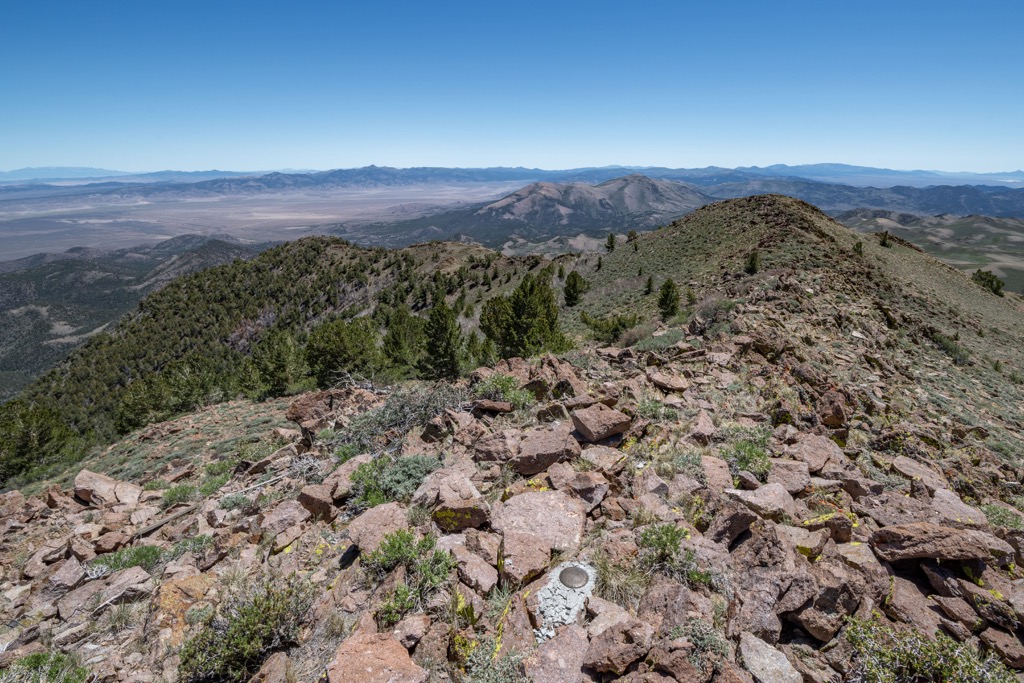
The Monitor Range lies in central Nevada within the Toiyabe National Forest. The range runs roughly in a north to south direction and lies within the Great Basin region.
This range extends roughly 115 miles (184 km) north to south and spans 44 miles (71 km) from east to west. Including the surrounding foothills, the range covers roughly 2,174 sq miles (5,630 sq. km) of land.
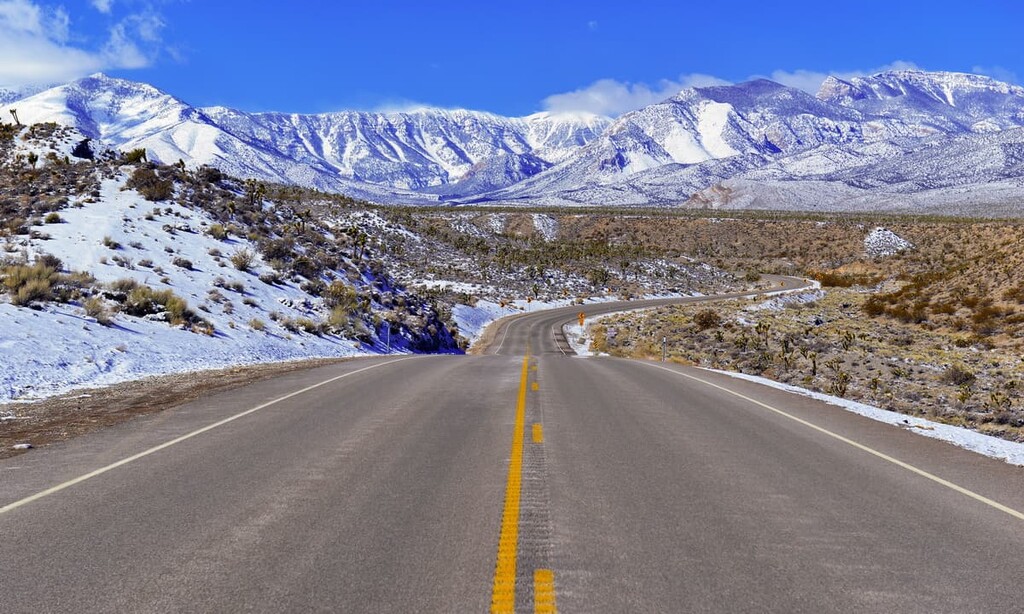
South of the range lies the Hot Creek Range with the Toquima Range situated to the west. The Stone Cabin Valley surrounds the southern end of the range. The Monitor Range lies within Nye County following along the edge of Eureka County.
The terrain within the Monitor Range is similar to other ranges in central Nevada. Ranges in the region are situated within the rain shadow of the Sierra Nevada that lies to the west along the Nevada and California border.
This arid landscape supports low growing vegetation along with stands of pine trees. Rugged ridgelines are met with sweeping basins and dramatic changes in elevation. The eastern foothills feature more dramatic changes in elevation, rising steeply from the valley floor.
There are no major rivers, streams, or lakes within the range. During the winter months the range receives a moderate amount of snowfall.
The Table Mountain Wilderness, which is part of the Toiyabe National Forest, lies within the Monitor Range. Other nearby areas for outdoor recreation include the Alta Toquima Wilderness and the Arc Dome Wilderness to the west. East of the range lies the Kawich Wilderness Study Area, Rawhide Mountain Wilderness Study Area, and Morey Peak Wilderness Study Area.
.jpg)
The peaks within and surrounding the Monitor Range are part of the Great Basin Ranges, which extend throughout much of Nevada, Utah, Idaho, Oregon, and California.
Other nearby ranges include the Toquima Range, Toiyabe Range and the Hot Creek Range. All of the surrounding ranges are part of the Basin and Range province. This mountainous region was formed by tectonic extension.

As the North American plate was stretched and folded, the landscape formed a series of alternating peaks and valleys. These unique landforms are what gave the region its name of the Basin and Range Province.
Fault lines are situated on the eastern and western sides of the range which causes the terrain to continually shift. Peaks in the Monitor Range are slowly being thrust up further as the valleys are slowly dropping in elevations.
The base of the range was formed during the Early Miocene. During the last glacial maximum the highest peaks in the Monitor Range were glaciated. As the glaciers retreated they carved out sweeping basins and formed the craggy peaks and ridgelines visible today.
Major peaks within the Monitor Range include Table Mountain, Summit Mountain, Bald Mountain, and Big Ten Peak.
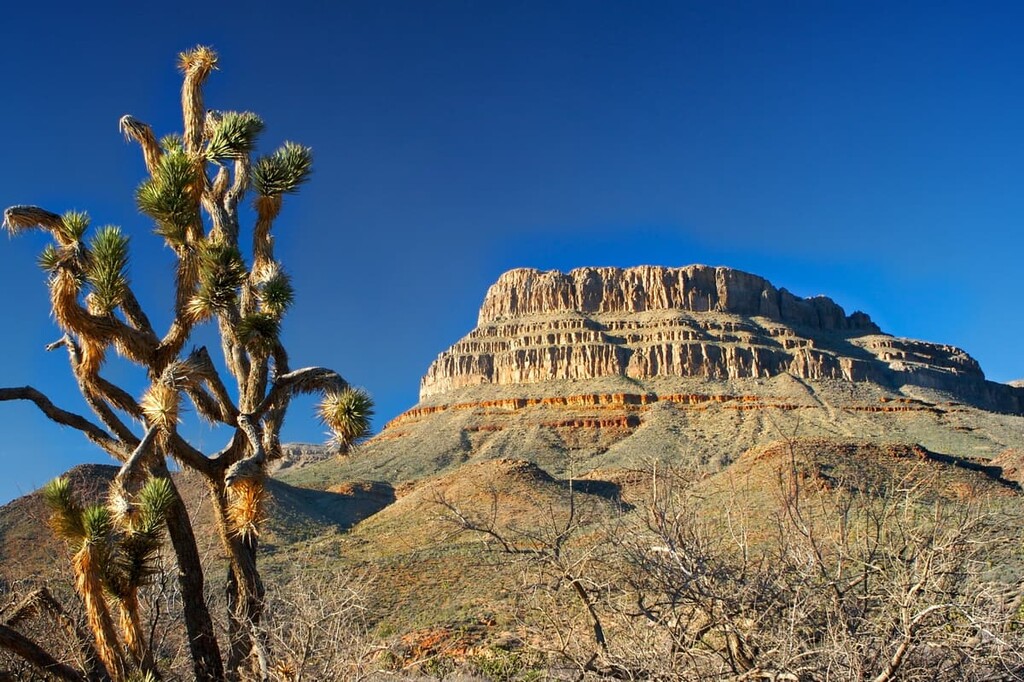
Since the Monitor Range lies in the rain shadow of the Sierra Nevada in western Nevada, the terrain is quite arid. Foothills in the region are often populated by low growing grasses and sagebrush.
As elevations increase the terrain transitions to patches of pine trees. The highest peaks in the range are generally free of flora, giving way to low growing grasses, shrubs, and rocky fields.
The surrounding ranges are known for their extreme alpine conditions. The nearby Mount Jefferson Research Natural Area in the Toquima Range looks at studying how life is able to survive amidst these harsh living conditions.

Despite the barren landscape, some animal species still inhabit the region. More common species include bighorn sheep, deer, elk, coyote, mountain lions, chukar, and grouse. Small fishing streams in the region are populated by rainbow, brown, and brook trout.

Present-day Nevada has been inhabited by humans for thousands of years. For roughly 10,000 years Indigenous people lived in the region before the arrival of European colonizers and settlers.
Numerous Indigenous Tribes and communities have inhabited parts of present-day Nevada. The most prominent tribes that have ancestral ties to this region are the Western Shoshone and Northern Paiute. Both tribes traditionally inhabited vast sections of land that would be used for hunting, gathering, and migrating with the changing of the seasons, living nomadically.
First contact between the Indigenous people of the region and Americans of European descent occurred during the 1820s. Prior to the arrival of new settlers, the Indigenous Tribes in the area were relatively peaceful with one another. Populations in the region grew quickly during the 1840s.
Settlers, often backed by the US government, continually harassed, attacked, displaced, and murdered the Indigenous peoples who fought to protect their native homelands. Numerous battles broke out between the two groups. Some of the most prominent battles fought in the surrounding region include the Pyramid Lake War, Owens Valley Indian War, Snake War, and the Bannock War.
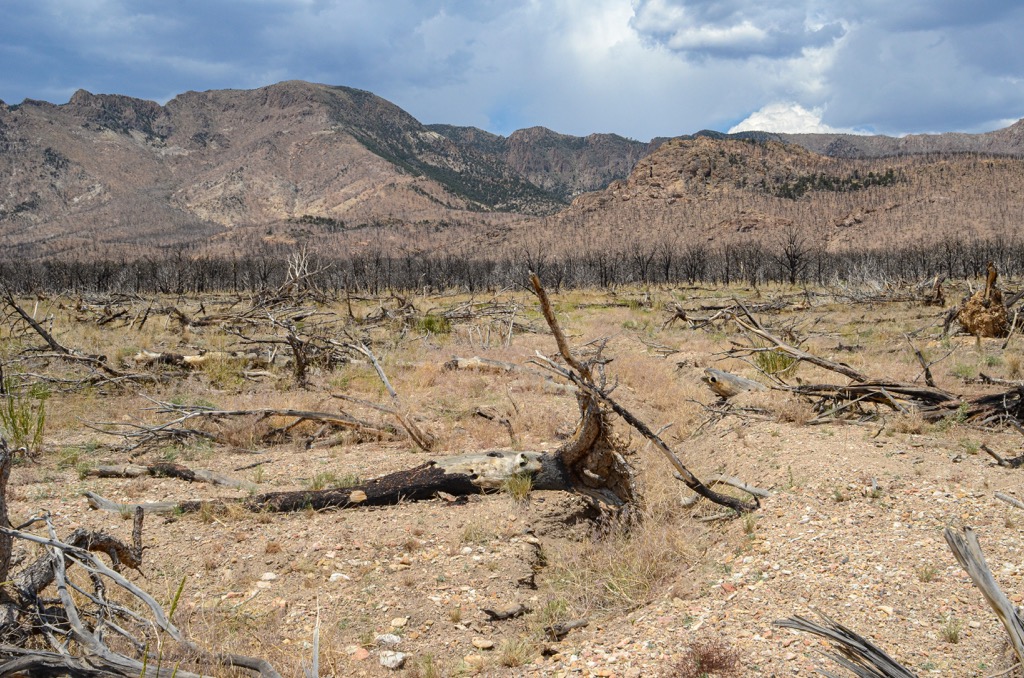
The arrival of infectious diseases, such as smallpox and measles, drastically affected the Indigenous peoples who had no natural immunity to these illnesses. Those who survived were forcibly removed from their homelands and placed on reservations.
During the mid-nineteenth century, more people began traveling through present-day Nevada en route to California for the California Gold Rush. Some small mining towns were also established throughout central Nevada though many were later abandoned.
The Toiyabe National Forest Reserve was established in 1908 and was later expanded in 1915 to include the nearby Toquima Range. The Table Mountain Wilderness was established in 1989. In 1995 the Toiyabe and Humboldt National Forests were administratively combined.

The Monitor Range is a relatively remote mountain range which features minimal amounts of established hiking trails. Hikers entering the area should be prepared for quick changing weather conditions. Here are some hikes located nearby:
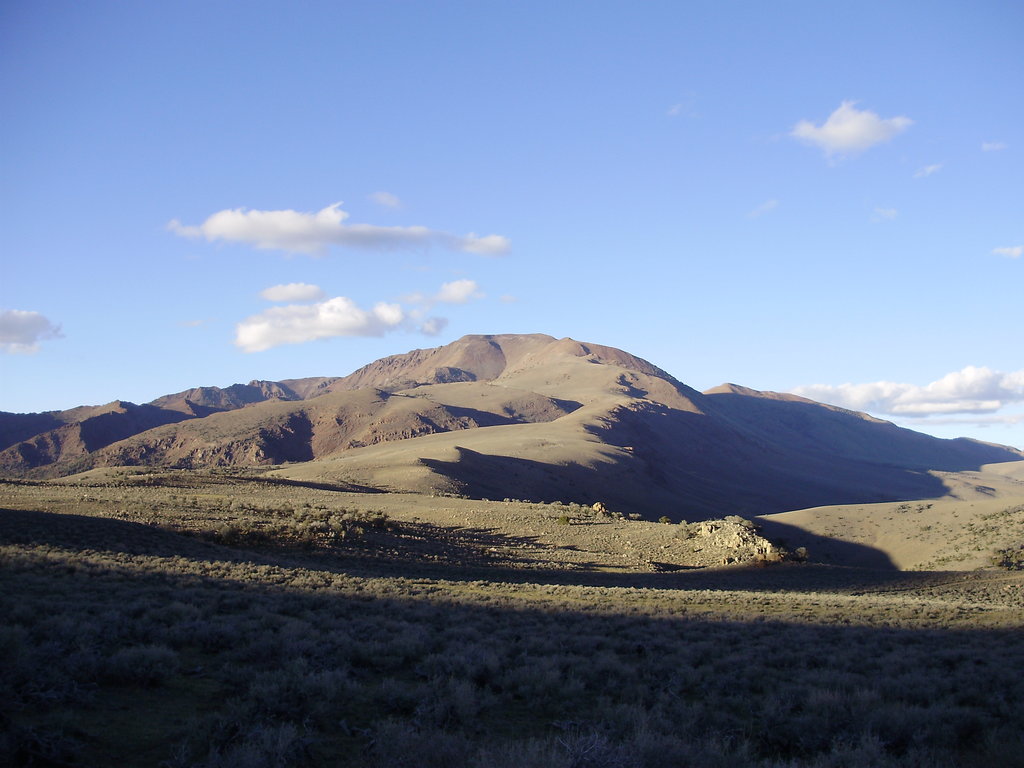
Looking for a place to stay near the Monitor Range? Here are some of the best cities and villages to check out in the region.
The town of Austin lies northwest of the Monitor Range, in the foothills of the Toiyabe Range. Home to just under 200 residents, the town is situated along State Route 50, nicknamed the “Loneliest Highway in America”
Besides being surrounded by the remote and rugged mountain ranges of central Nevada, Austin is also located near Spencer Hot Springs, a popular spot for those visiting. Austin is often referred to as a “living ghost town”, due to its preservation of an old mining town.
Visitors can enjoy hiking, backpacking, or mountain biking in the nearby ranges or visit one of the unique downtown shops. Nearby points of interest include the Lincoln Highway Car Show and the Hickson Petroglyph Recreation Area.
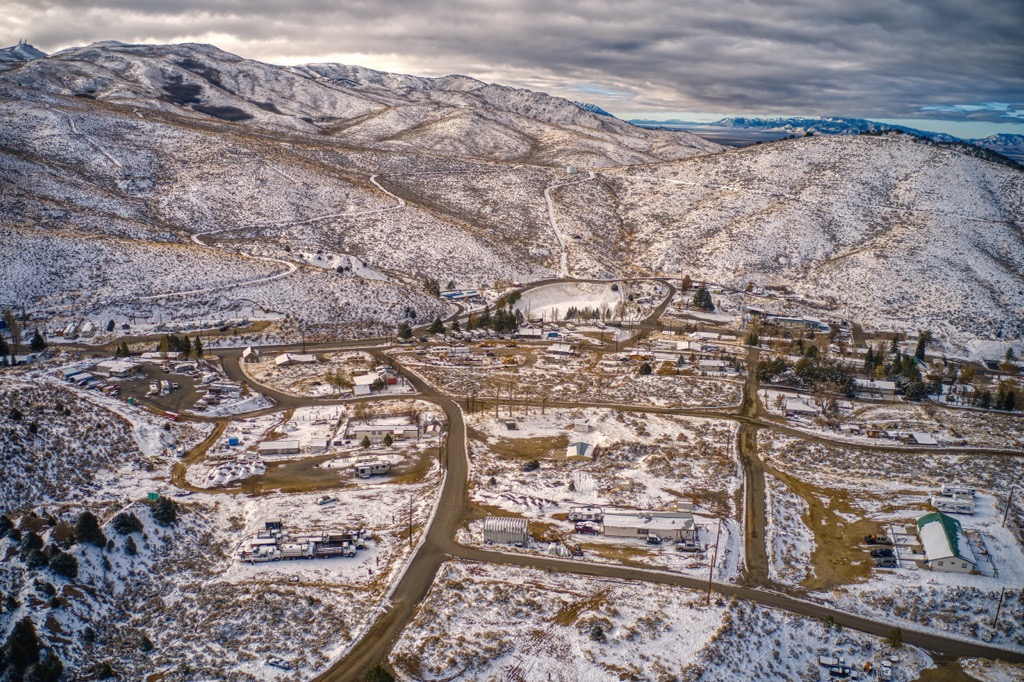
Reno lies a three hours drive west of Austin, marking the closest major city to the range. Nicknamed “The Biggest Little City in the World,” Reno is home to a plethora of casinos and surrounded by opportunities for outdoor recreation.
With a population of 425,000, Reno marks the second largest city in the state following Las Vegas. The Nevada Museum of Art is located downtown. Just outside the city lies opportunities for hiking, mountain biking, and rock climbing. Nearby Lake Tahoe offers ample opportunities for summer recreation as well as numerous ski resorts during the winter months.
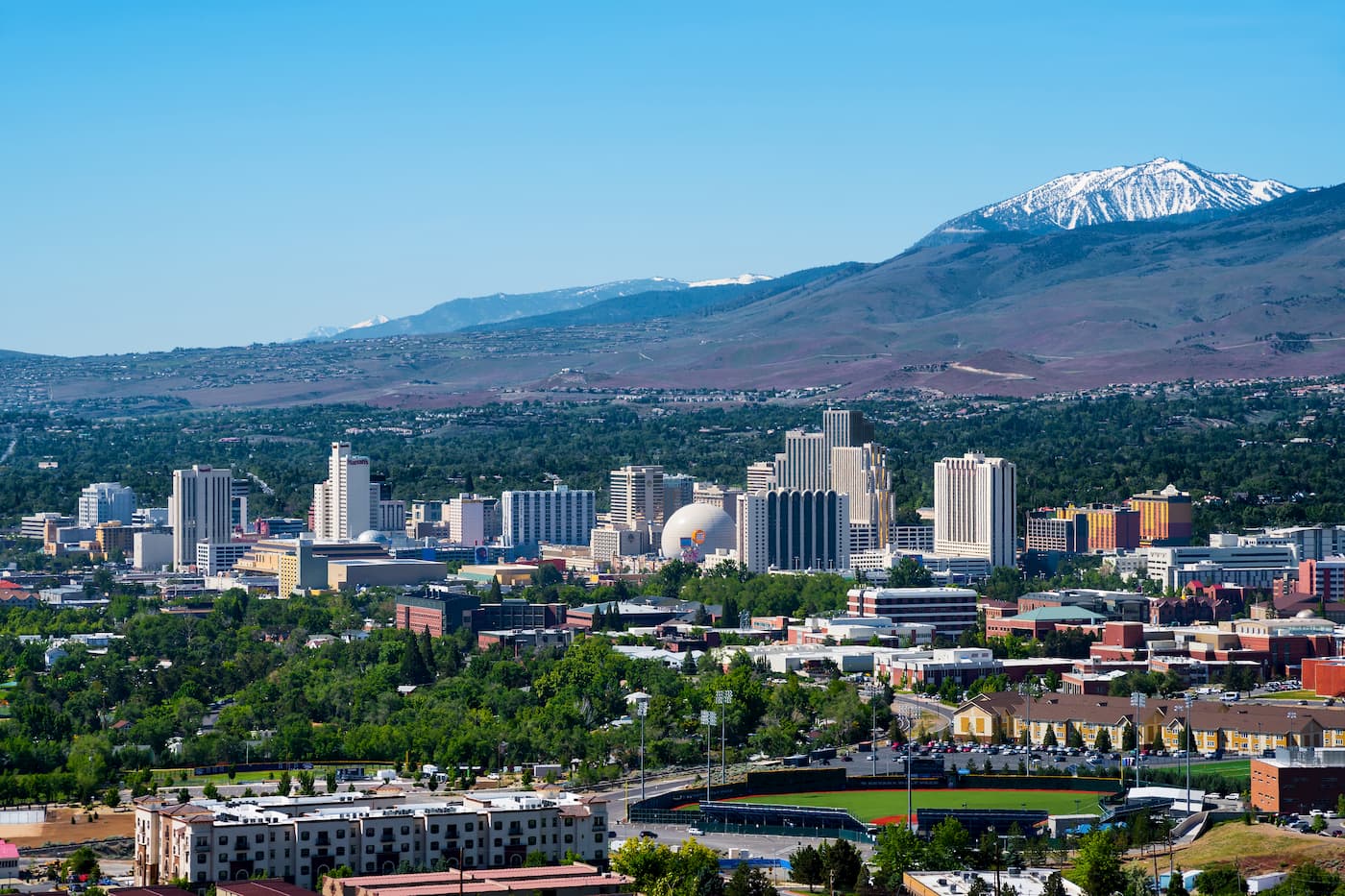
Explore Monitor Range with the PeakVisor 3D Map and identify its summits.



